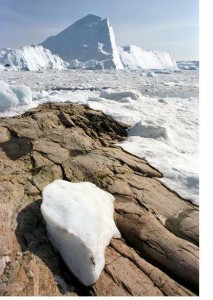SUNDAY, 13 FEBRUARY 2011
 Mercury in the environment is converted by microbes into organic forms, especially methylmercury. This form of the pollutant is soluble in lipids, so it can get into the food chain and 'bioaccumulate'. Because of this accumulation process, methylmercury reaches its highest concentrations in top predators such as seabirds. Here, mercury can be detected not only in the tissues of the animal but in the eggs they lay.
Mercury in the environment is converted by microbes into organic forms, especially methylmercury. This form of the pollutant is soluble in lipids, so it can get into the food chain and 'bioaccumulate'. Because of this accumulation process, methylmercury reaches its highest concentrations in top predators such as seabirds. Here, mercury can be detected not only in the tissues of the animal but in the eggs they lay.Methylmercury can be broken down by photochemical reactions, which result in a change in the relative abundance of isotopes in the environment. This means that scientists measuring the isotope ratios of mercury in eggs can monitor changes in photochemical activity.
Researchers working in the Bering Sea, North Pacific and western Arctic Ocean have collected eggs from colonies of the common murre (Uria aalge) and the thick-billed murre (Uria lomvia) and found that mercury isotope ratios vary geographically [1].
They dismissed the possibility that the changes they detected were due to differences in feeding behaviour, solar radiation or mercury sources. Instead, they showed that photochemical breakdown of methylmercury was suppressed in areas of greater ice cover. Sea ice cover therefore appears to be an important factor in the cycling of this pollutant, and the process of methylmercury breakdown is likely to accelerate in the future as increasing Arctic temperatures further reduce the amount of ice.
Written by Amelia Penny
